J.League All-Time ”Best 15”
To mark the upcoming kickoff of J.League's 30th season, I was recently asked by a journalist in Germany to submit a list of what I consider to be "the most influential 15 players in J.League history". This sent me on a very long trip down memory lane. I thought that long-time J.League fans might be interested in hearing my list, and perhaps sharing your own suggestions.
The list of popular, influential, technically gifted players who have played in Japan is long and star-studded. Names range from Keisuke Honda and Hidetoshi Nakata to Zico, Hristo Stoichkov, Ramon Diaz, Frankie Ljungberg, Hulk and Andres Iniesta. If we included everyone who ever played a J.League contest, it would be impossible to narrow the list down to less than 50, and ranking them would be meaningless unless we have some criteria for who to include, and what factors should be given the most weight.
My first criterion is that I will only consider players based on their performances in the J.League, so I will not include the likes of Honda, Nakata, Hasebe and so many more, who spent the majority of their career overseas. Also, in keeping with the J.League/Japan focus, I will include only one non-Japanese player (even though many have made significant contributions). I will consider the totality of the player's contributions to the League, not only on the playing field but also as a role model, coach, announcer, personality, etc. However, individual playing skills and success in winning silverware will be the two highest priority items.
Finally, to avoid comparing apples and oranges, I will try to choose something that at least resembles a regular 15-man squad (ie. including a keeper and at least 3 defenders) and not just a list of the J.League's top scorers and assist providers. So here it is - my list of the J.League Top 15.
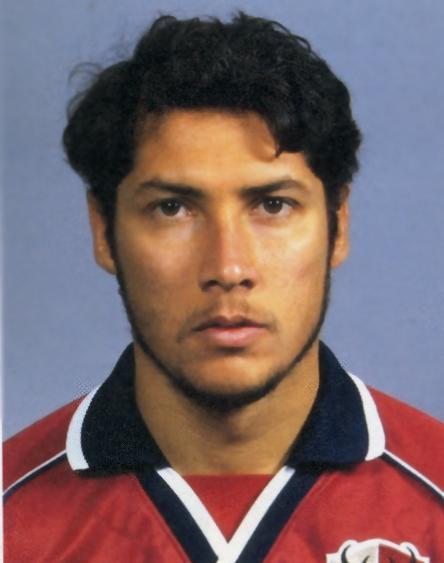 15. Bismarck Baretto Faria
15. Bismarck Baretto Faria 

As noted above, I deliberately limited the list to only one non-Japanese player, so the decision of who to include is difficult. Also Im listing it as #15, by default. The rest of the list is in order of "most influential to the J.League."
It would be easy to justify choosing either Zico (Kashima Antlers), Carlos Dunga (Jubilo Iwata) or Dragan Stojkovic (Nagoya Grampus) based on how they influenced the development, identity and success of their respective clubs. But in all cases, much of this impact came from the long-term association with the club (as a sempai, and as a coach), and not what they actually did on the field of play.
Bismarck Baretto Faria, on the other hand, was a hugely influential component of not one, but TWO of the J.League's early dynasties. Bismarck played for Verdy Kawasaki during the Green Buzzards' glory years, from 1993 through 96, and then joined Kashima Antlers as they entered the first phase of success in their long history, 1997 to 2001. He remains the only player in J.League history to win all three trophies (League, Emperor's Cup and Nabisco/Levain Cup) with two SEPARATE teams.
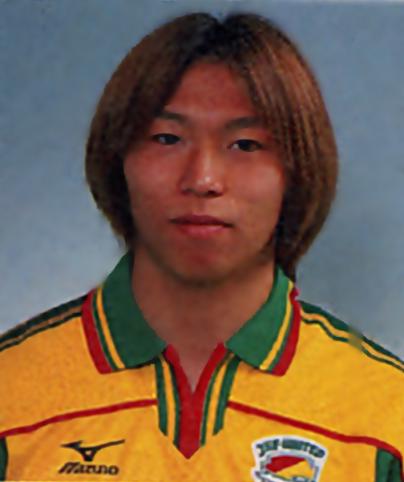 14. Hisato Sato
14. Hisato Sato 



I thought about including Yoshito Okubo - a similar player in both type, and career - but Sato had greater experience and arguably greater success in Japan (while Okubo spent several key years in Germany). Both are consummate finishers - small, dynamic players who use speed and guile to achieve results in the box, rather than height and power. Okubo ended up scoring a few more total goals, but he didnt settle at any one club, and never won major titles. Sato, on the other hand, had three league titles to go with his individual scoring tallies. In terms of contribution to a particular team, he was a far more influential player.
Sato started his career with JEF United and spent a short time at Cerezo and Vegalta, but the vast majority of his career (from 2005 to 2020) was with Sanfrecce Hiroshima, where he was hugely influential on the pitch, very close to fans, and an example for all his teammates. Though he is not nearly as flashy, or "famous" as some other golden boot performers of the past, in terms of his overall impact on his team, and on the J.League, Hisato Sato is one of the most successful strikers Japan ever produced.
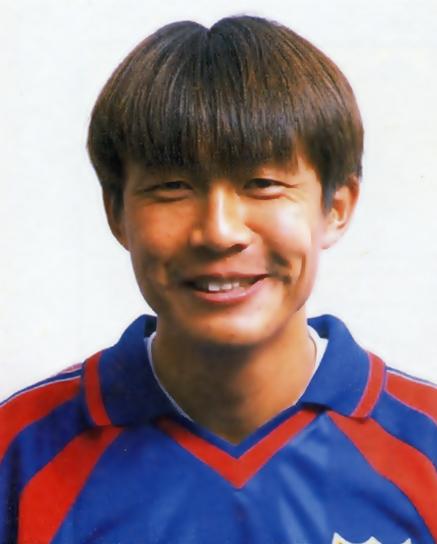 13. Fumitake Miura
13. Fumitake Miura 


There were several important players named Miura, during the J.League's first decade. The most famous were "King" Kazu, and his brother Yasutoshi, who played for the Verdy Kawasaki teams of the early 90s. Atsuhiro Miura, who played for both Yokohama teams and was a national team regular in the early 00s, also shared the last name.
But in my opinion the most talented Miura, and the one who contributed most to his team, was Fumitake, who played on the Yokohama Marinos 1995 championship team, as well as the Jubilo Iwata 1999 league winners. As a linking player in midfield, Fumitake was the sort of guy who doesnt get a lot of attention or credit, but is essential to the team's chemistry on both offense and defense. Any great team needs a player who can carry water and supply the "stars". Fumitake Miura filled that role regardless of where he played. Winning titles with two very different teams shows how much value he could add.
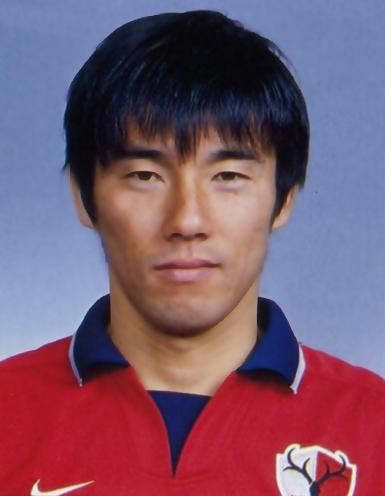 12. Naoki Soma
12. Naoki Soma 

There have been several Japanese wingbacks who earned strong reputations in Europe, like Atsuto Uchida or Yuto Nagatomo, but of all the players at that position, the one who had the greatest impact on the J.League is probably Naoki Soma. Soma basically provided the "mold" for a modern Japanese wingback, at the 1998 World Cup.
His performance as a player for the national team and for Kashima Antlers during their first phase of glory, along with that of opposite wingback Akira Narahashi, basically created the model for how many J.League teams use "flying wingbacks" to create the wide space, rather than midfield wings. However, that was not Soma's only contribution to the J.League's development. He has moved on to coaching, and has achieved varying levels of success in developing teams like Kawasaki Frontale and Machida Zelvia, not only on the sideline, but also as a team manager and administrator.
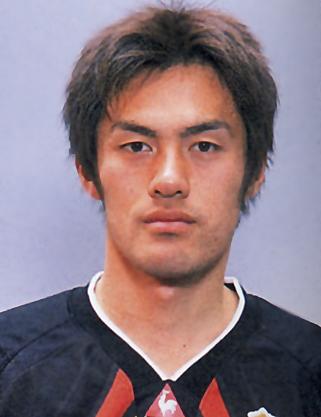 11. Seigo Narazaki
11. Seigo Narazaki 

Seigo Narazaki was a member of four World Cup squads and was one of the league's premier goalkeepers for two entire decades. The only other keeper who has been anywhere near as influential is Yoshikatsu Kawaguchi, and he spent a good part of his career overseas.
Narazaki started his career with Yokohama Flugels, and he was between the posts when Flugels won their historic 1999 Emperor's Cup title on the day after the club had been officially disbanded. He also won the League title with Grampus, where he moved after the Flugels were dissolved and remained for the rest of his career.
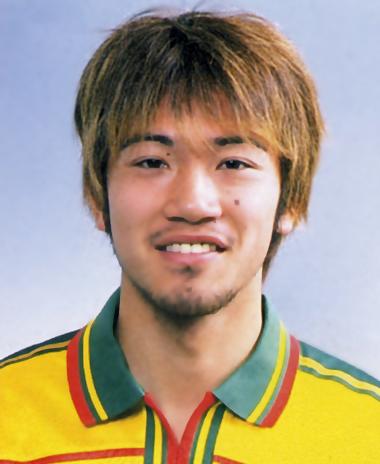 10. Yuki Abe
10. Yuki Abe 

Japan has had a lot of top-quality midfield generals over the years (several included in this list), but most of them were technical specialists who sat in deep midfield and orchestrated play, whereas Yuki Abe was a much more well-rounded player who could fill in anywhere across the back line, and even play as a striker (in his early career with JEF United). Abe was a consummate team player, who didnt always stand out as a star, but who always seemed to make the critical play in a game-winning or -losing situation. He achieved success with JEF United under Ivica Osim, who also took him briefly to the National Team, and with Urawa Reds, where he spent most of his career.
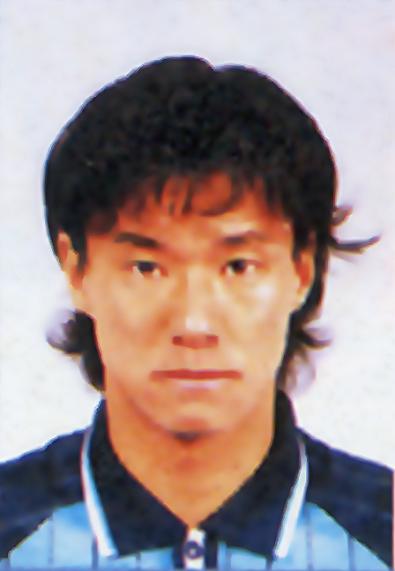 9. Masashi "Gon" Nakayama
9. Masashi "Gon" Nakayama 
Some people might decide to put Kazu Miura in their list, based on longevity and the contributions he made to the J.League in the 1990s. However, despite being a good player back in the 1990s, in recent years Kazu has been more of a sideshow -a freak of nature used to generate attention- rather than somebody who can actually help his team win games. I feel that his legacy has been cheapened because he spent most of his career as just the guy with his face on the matchday programme.
Gon Nakayama, on the other hand, not only had a long and silverware-laden career, but in his latter years he was actually making some level of contribution to the club with his play ON the pitch and not just serving as an unofficial mascot. Nakayama still shares a world record for most consecutive hat tricks, and his reflexes were always amazing (he scored one goal famously by "butting" a low cross with his buttocks). Above all Nakayama was - and remains - a hugely charismatic personality who always could draw a laugh from the post-match interview announcer, and who endeared himself to fans with charm and personality, as well as old-fashioned "guts". Nakayama fractured his leg in a goalmouth scramble with several minutes to play in Japan's 1998 World Cup match against Jamaica. Despite the pain, he stubbornly continued to make hobbling runs towards goal ... because Japan had used all its subs and he didnt want to let the team down.
 8. Masami Ihara
8. Masami Ihara 

Ihara was one of a handful of players (along with the Hashiratani brothers, Kenta Hasegawa and Takuya Takagi) who started their careers in the old JSL, but who also were major influential players in the J.League era and went on to become top coaches as well. Ihara was so influential at Yokohama that he earned the nickname "Mr. Marinos". As a big, powerful centre half during an era when most such players were foreigners, Ihara was a vital part of both the Marinos title-winning teams of the mid-90s and the Japan National Team. He has continued to contribute to the League since retirement. Ihara has a as one of Japan's top coaches, not only with Kashiwa Reysol and Avispa Fukuoka, but also as a Japan National Team assistant and youth coach.
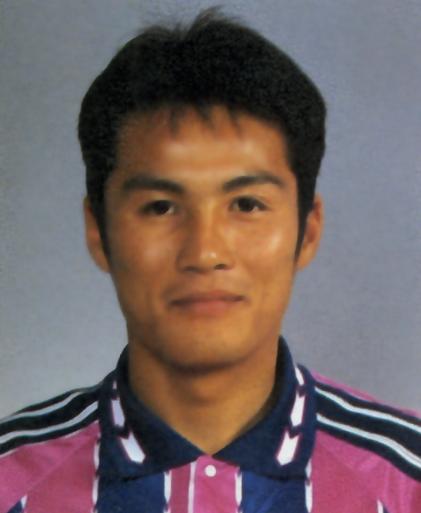 7. Hiroaki Morishima
7. Hiroaki Morishima 
Like Ihara and some of the players I will mention later, Morishima's importance to the J.League goes far beyond just his play on the pitch. He was also a role model and symbol for the entire Cerezo Osaka team, and even today he has an official role as "Team Ambassador".
Morishima was a very slick passer and dribbler, who was one of the first in a long line of Japanese players who served as the "field general", directing teammates around and stringing passes together to penetrate opposing defenses. Some of the players who came later (Nakata, Kagawa, Honda, Nakamura . . . ) may have been more technically talented, but few have had as big an influence on more people than "Morishi".
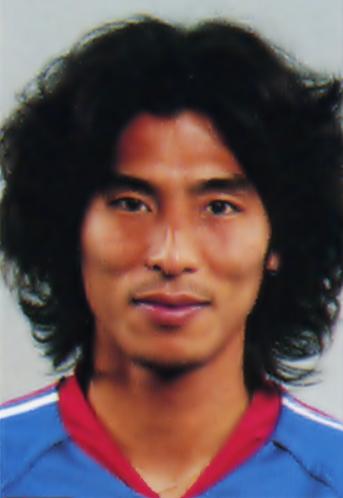 6. Yuji Nakazawa
6. Yuji Nakazawa 

Like his one-time Marinos teammate Masami Ihara, Nakazawa set the standard for Japanese central defenders, over a period of almost two decades. Tall, strong in the air, and athletically gifted, many assume that he earned his nickname "Bomberhead" from his heading prowess. However, the Japanese slang term "Bambaa-head" is actually derived from the name of funk-rock pioneer Afrikaa Bambaataa. It refers to an "afro-style" hairdo, which was Nakazawa's signature look, back in the early 00s.
Yuji Nakazawa was a true iron man, rarely missing a match or being subbed out. He won titles with the Marinos and the Japan National Team, and his dependability made him always one of the first names on the team sheet.
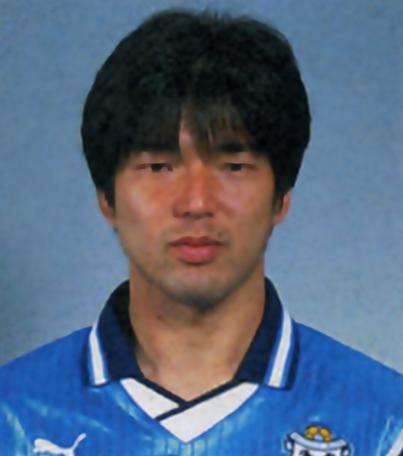 5. Hiroshi Nanami
5. Hiroshi Nanami 
I had to include at least one member of the famous Jubilo Iwata midfield from the 1998-2003 period. Nanami, Toshiya Fujita, Carlos Dunga, Toshihiro Hattori, Cesar Sampaio, Takashi Fukunishi and Daisuke Oku played some of the most beautiful passing football of the J.League's first decade. All of them had a great first touch, and an aggressive nature, but it was Nanami who held the whole performance together. He also has been an influential coach for Jubilo since retiring, as well as a popular and respected announcer/commentator.
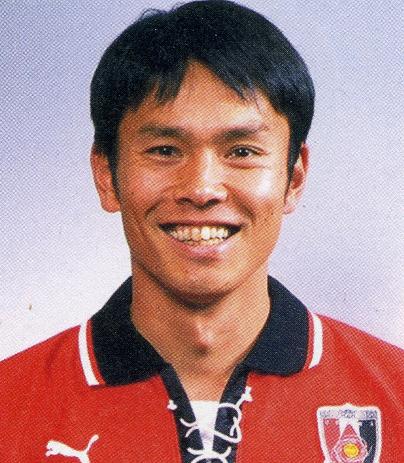 4. Masahiro Fukuda
4. Masahiro Fukuda 
Along with Kazu Miura and Gon Nakayama, Fukuda was one Japan's National Team stars back in the first few years of the J.League. His popularity as a Japan international was important in boosting support for the J.League during the early years, and his popularity with fans was certainly a factor in the growth of what became Japan's largest club fan base -- the Saitama Red Army.
Fukuda earned the nickname "Mr. Reds", to match Masami Ihara's "Mr. Marinos." In addition to his goal tally as the team's ace striker, Fukuda contributed as a team leader and role model. His retirement match, at Saitama Stadium, drew more fans than many title matches. He remains one of the most popular and well recognized announcers in the J.League.
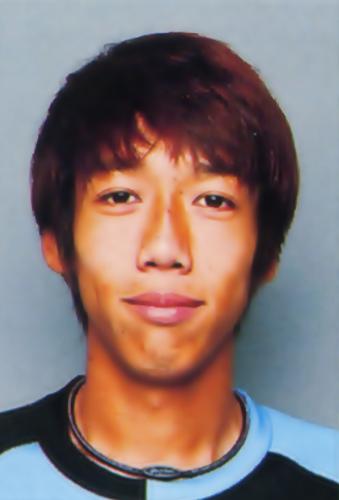 3. Kengo Nakamura
3. Kengo Nakamura 
Like most of these final few choices, Kengo Nakamura contributed a lot more to Kawasaki Frontale over his career than just what he accomplished on the pitch. Nakamura was a team leader and an essential part of any Frontale fans' memory of the team. His passing skill and vision were as good or possibly better than those of the more famous Nakamura, Shunsuke, though he lacked the former Celtic player's dead ball skills. Though he retired in 2020 and thus did not share in Frontale's most recent title, he helped construct the foundation on which the team's later success was built.
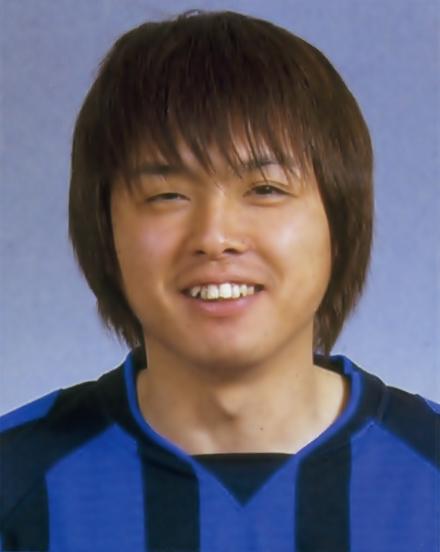 2. Yasuhito Endo
2. Yasuhito Endo



Yasuhito Endo was one of the J.League's most renowned midfield generals, not only for Gamba Osaka (where he won two J.League titles and an Asian Champions League crown) but also for the Japan National Team. He holds the record for most national team appearances, and given the broader talent pool today, his record of 152 NT caps will probably never be broken.
Endo got his start at Yokohama Flugels, but after the Flugels were dissolved in 1999, when Endo was just 21, he was one of the few players who were not picked up by Yokohama Marinos (which was supposedly taking in the former Flugels). After a year in Kyoto, though, he was signed by Gamba and would spend the next two decades as the irreplaceable engine in the Osaka midfield. In addition to his club success he played in three World Cups for Japan, and was a team leader for two of those campaigns.
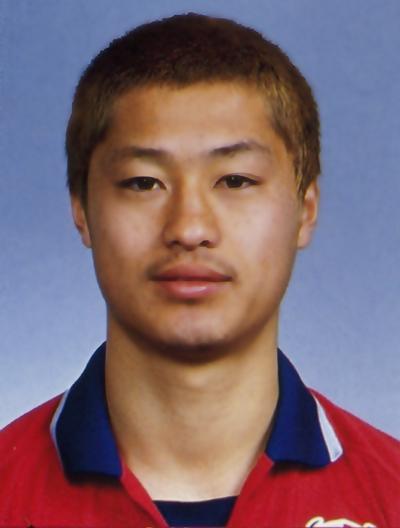 1. Mitsuo Ogasawara
1. Mitsuo Ogasawara 
There could only be one possible choice for number one most influential player in J.League history.
Why? Lets count the reasons:
Seven J.League championships. Seven selections to the J.League "best eleven". Six Nabisco Cups. Five Emperor's Cups. Five Xerox Cups. Four MVPs in a championship match (two League titles and two Nabisco Cups). Three qualifications to the World Cup. Two Asian Cup titles. One Asian Champions League title, and a second-place finish in the Club World Cup after playing Real Madrid to a draw in regular time.
And that doesn’t include several minor titles such as the A3 Championship and the Copa Sudamericana. Nobody else even comes close.
You can suggest that Kashima Antlers’ long history of success is a major reason for Ogasawara’s phenomenal haul of trophies. But the reverse is true as well. Ogasawara was always a consummate team player - the sort of calm guiding force that makes everybody else on the pitch a little bit better. You can always tell a winner. Because they win.
0. Coach: Nelson Baptista Junior (Nelsinho) 



There have been a lot of coaches who contributed a lot to the J.League during its early development. Some - like Mihailo Petrovic - introduced new strategic ideas and formational patterns that are still being developed and refined in the J.League today. But by far the coach who has served in the J.League the longest, and had the biggest impact on his clubs, is Nelsinho. He was the guiding hand behind the Verdy Kawasaki championships of the early 90s, he had cup success with Nagoya Grampus, and he won the league again with Kashiwa Reysol in 2011. He still is being courted by teams after he left Reysol last season, and his career as a J.League coach may still have another chapter.
Hits: 5830